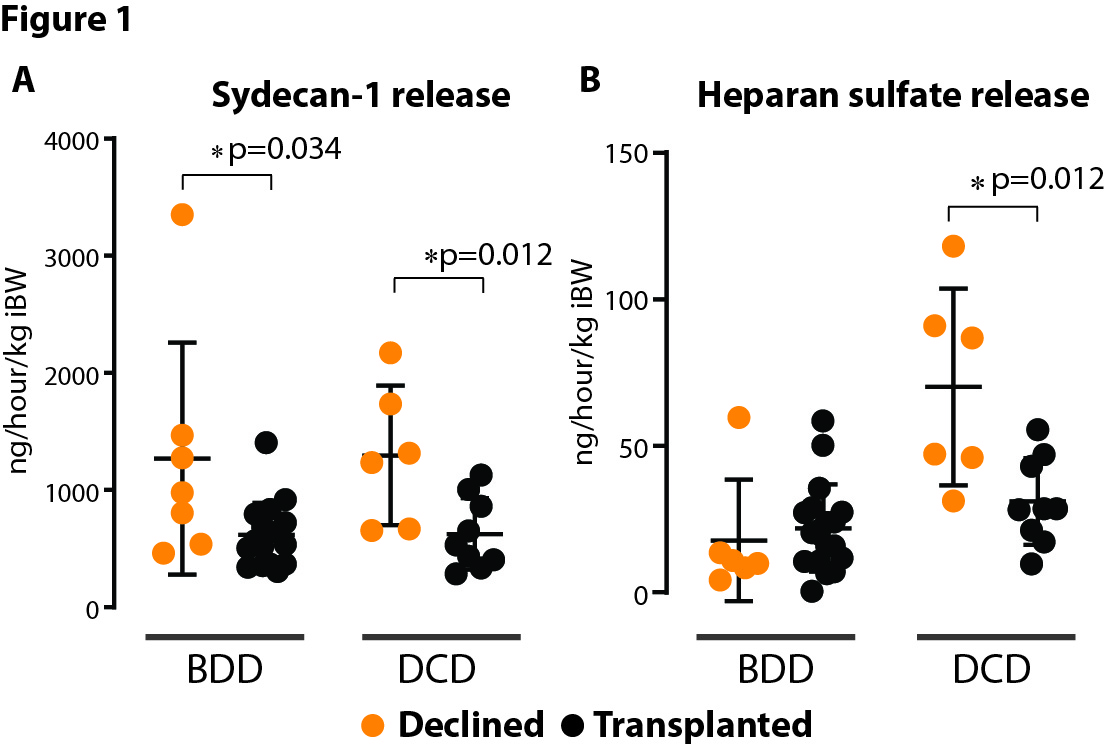Endothelial Glycocalyx Shedding is Associated with Graft Quality During Ex Vivo Lung Perfusion
Department of Cardiothoracic Surgery, University of Pittsburgh, Pittsburgh, PA
Meeting: 2021 American Transplant Congress
Abstract number: 653
Keywords: Donors, marginal, Endothelial cells, Lung transplantation
Topic: Clinical Science » Biomarkers, Immune Assessment and Clinical Outcomes
Session Information
Session Name: Biomarkers, Immune Assessment and Clinical Outcomes
Session Type: Poster Abstract
Session Date & Time: None. Available on demand.
Location: Virtual
*Purpose: Endothelial glycocalyx is the surface protective layer of the endothelial cells and its damage is known to be strongly associated with organ dysfunction. However, the impact of endothelial glycocalyx integrity and donor lung quality are unknown. In this study, we investigated the association between glycocalyx integrity and graft quality using an ex vivo lung perfusion (EVLP) platform.
*Methods: We analyzed perfusate obtained from clinical EVLP using marginal lungs from brain death (BD) donor and donor after circulatory determination of death (DCD). Heparan sulfate and syndecan-1 levels were defined as markers of endothelial glycocalyx degradation. Graft transplantability was comprehensively defined based on graft function, physiology, radiographic, bronchoscopic and surgical assessments. Data were compared between graft quality (transplanted or declined) and/or donor type.
*Results: Of 39 total EVLP cases analyzed (24 BD and 15 DCD), seventeen BD lungs and nine DCD lungs were transplanted after EVLP. Declined for transplant lungs showed radiographic, bronchoscopic and surgical assessments signs of edema/bogginess. In addition, declined lungs displayed increased EVLP perfusate levels of syndecan-1 (Figure 1A). Overall, no significant physiologic EVLP parameter differences were observed between transplanted and declined lungs. While no association was found between EVLP perfusate heparan sulfate concentrations and graft transplantability in BD lungs, perfusate heparan sulfate levels were significantly higher in declined DCD lungs compared to transplanted DCD lungs (Figure 1B).
*Conclusions: Our data demonstrate that endothelial glycocalyx shedding during EVLP is associated with the decision to transplant or not transplant. In particular, increased fragility of the glycocalyx was observed in DCD lungs. These findings suggest that strategies for preserving and repairing the vascular endothelial glycocalyx may improve graft quality. Further investigation is required to demonstrate a clear association between glycocalyx shedding and posttransplant outcomes.
To cite this abstract in AMA style:
Noda K, Philips BJ, Harano T, Luketich JD, Sanchez PG. Endothelial Glycocalyx Shedding is Associated with Graft Quality During Ex Vivo Lung Perfusion [abstract]. Am J Transplant. 2021; 21 (suppl 3). https://atcmeetingabstracts.com/abstract/endothelial-glycocalyx-shedding-is-associated-with-graft-quality-during-ex-vivo-lung-perfusion/. Accessed December 26, 2025.« Back to 2021 American Transplant Congress

